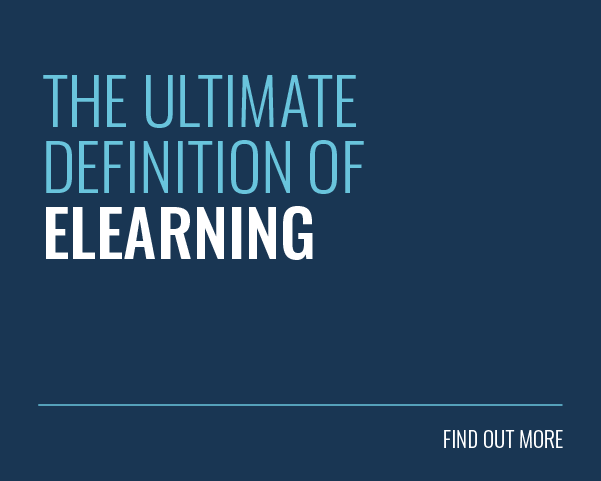
We are using the earth’s resources at a record speed. In fact, our climate is in a worse state than ever before. And that’s due to human action.
Luckily, all is not lost! Various technological advances have helped to combat the current climate catastrophe. One of these steps forward has come in the form of online learning.
We have identified several reasons why adopting online learning can be beneficial to you, your learners and the planet. These digital learning tools can help you to lower the cost of your training without sacrificing quality, all while having a more positive impact on the environment.
But why exactly is online learning more sustainable than traditional face-to-face training? In a nutshell, eLearning helps you to reduce your carbon footprint. This article will do a deep dive into the nitty-gritty of online learning as the environmentally friendly approach.
Before we explore how online learning can help you to reduce your environmental impact, let’s take a look at the current climate crisis.
The Current Environmental Crisis
Our negative impact on the environment has become increasingly apparent in the last decade. In fact, we are producing greenhouse gas emissions at a record rate! The amount of carbon dioxide (CO2) emissions in our atmosphere has reached 417 parts per million. The last time this happened was around four million years ago.
We currently use 1.7 Earths worth of resources each year. That means that Earth Overshoot Day now falls in July, compared to September in the early 2000s. A recent study even estimates that the world’s natural resources may run out as soon as 2040.
The last four years were also the four hottest on record. This has caused glaciers and ice sheets to start to melt faster than ever before.
And did you know that almost two-thirds of the world’s major cities are located in areas at risk of rising sea levels? If we don’t take action to stop the climate crisis, we can soon wave goodbye to cities like New York, Shanghai and Abu Dhabi.
Thankfully, governments have created guidelines to slow global warming. In fact, the 2030 Agenda for Sustainable Development highlights 17 Sustainable Development Goals, also referred to as SDGs or Global Goals. These goals provide an urgent call for action to help tackle climate change.
And as a result, individuals and organisations alike are taking action. Various surveys indicate that most individuals are taking steps to control global warming. As such, it only makes sense to consider how learning and development fits in the picture.
Environmental Impact of Education
After expressing concerns about the environmental impact of education, the United Nations General Assembly adopted resolution 57/254 in December 2002.
This resolution focused on putting in place the United Nations Decade of Education for Sustainable Development (DESD). DESD aimed to change prevailing approaches to education by integrating sustainable practices into all aspects of learning.
In the UK, the government started to address environmental challenges by passing the Climate Change Act of 2008. As a result, the Higher Education Funding Council for England (HEFCE) set out a 10-year action plan to make sustainability a central part of higher education.
These kinds of acts and policies have helped to move the L&D space towards a more sustainable future. Now, government bodies and educational institutions alike have started to adapt their strategies and commitments to help reduce their carbon footprint.
However, despite improvements in areas like waste management, there are still various aspects of traditional face-to-face learning that raise concerns. These include, for instance, carbon emissions and the use of renewable energy.
As a result, educational institutions and organisations have started to seek more comprehensively sustainable training solutions.
Online Learning — The Unexpected Solution
Online learning can be a highly engaging and cost-effective learning option. In fact, we have seen some awesome results with our clients.
But even more importantly, eLearning is considered the greener way to learn! As such, by choosing to embrace online learning, you are making a small and convenient choice to help our Earth.

Where do these benefits come from? Various studies indicate that online learning is more sustainable as it helps you to:
- Reduce pollutants and emissions
- Cut down on commuting and transport
- Limit paper usage
- Reduce drain on natural resources
- And save energy
To understand the impact online learning can make, let’s explore these topics more in-depth!
1. Transport
Let’s start with the most obvious one! Transport is one of the biggest contributors to climate change and environmental degradation. In fact, transportation as a whole accounts for a third of all greenhouse gases.
Luckily, online learning is an excellent way to reduce emissions for transportation and commuting. After all, learners can access their training at home without the need for face-to-face classroom space.
This can help you to reduce your carbon footprint, as you limit fossil fuel use and lessen detrimental effects on the environment. In fact, a study by the University of West Georgia found that online learning helped to cut CO2 emissions by 5-10 tons per semester for every hundred students.
Another study found that distance learning can result in an 89% reduction in travel-related emissions. In fact, if a twenty student course moved online, it could save 1,200 tons of CO2 emissions.
Online training gives you the opportunity to deliver training remotely. As such, your learners or trainers will no longer have to zoom up the motorway, simultaneously polluting our atmosphere. This makes a big difference. After all, according to Bloomberg, nearly 60% of students take a car to school, which results in heightened pollution and emission levels.
And these examples only consider commuting to nearby schools or training venues. But the reality is that many such training events take place abroad. As such, organisations that adopt technology to collaborate and learn can reduce the need to travel long distances to bring people together.
This can have enormous positive effects on our environment. After all, just one hour of flying creates around 1/4 tonnes of CO2. And this means that your long-distance training event can generate thousands of kilograms of emissions!
2. Paper
In-class handouts, textbooks, tests and other resources consume a huge amount of paper. This paper then typically piles up in landfills. In fact, the National Wildlife Foundation found that 60% of school waste comes from paper.
Similarly, the average office uses a whopping 10,000 sheets of copy paper each year. Even worse, a typical school uses around 2,000 sheets per day! That is about one tree per week.
It has been estimated that between 55 and 100 million trees are cut down each year in the US alone to meet paper needs. After all, it takes 24 trees to make 1 tonne of paper. However, only half (53%) of this paper gets recycled. And the other half? That, too, ends up in landfills.
Luckily, online learning is also an excellent way to reduce deforestation by eliminating paper usage and paper waste. After all, you can find all your training content online using a single device.
Online learning can also help to reduce the atmospheric pollution that paper-cellulose production factories release to their surrounding areas. And did you know that eBooks alone could save more than 15.8 million trees for every billion books not printed? That, our friend, is why you are reading this article online!

3. Energy Consumption
One of our favourite features of online learning is its accessibility. You no longer have to sit in a physical classroom to learn. You can complete training at home or on the go, depending on your individual needs.
This is an excellent way to reduce energy consumption. It allows schools and training venues to use less energy for power, electricity, heating and cooling systems.
The estimated annual energy costs for the further and higher education sectors in England total more than £200 million. As a result, this sector is responsible for releasing at least 3 million tonnes of CO2 into the atmosphere each year.
Luckily, the Open University Design Innovation Group (DIG) found that online training consumes nearly 90% less energy than in-class training programmes. This is a significant decrease, as a single university can consume a whopping 120 million kWh to 126 million kWh per year.
In fact, your typical higher education buildings of around 55,000 square feet consume between £200,000 and £3 million worth of energy each year! The amount tends to be higher for old campuses that are not as well-equipped to make necessary energy-saving upgrades.
One university also had great success in saving 4,000 hours of lighting by reducing the need for classroom use. This not only saved thousands of dollars but also prevented the generation of 19 tons of CO2 emissions.
4. Natural Resources
Paper usage aside, online learning is an excellent way to save other natural resources. One of these resources is water.
Schools and training venues typically use water in restrooms, landscaping, heating and cooling the building and cafeteria kitchens. Not to mention the amount of water it takes to make paper! While your learners will still use water while studying at home, the quantities are typically way smaller.
Distance learning is also known to reduce plastic and food waste. It is estimated that schools in the US waste 530,000 tons of food per year. Similarly, one school-aged student using disposable lunch products creates 67 pounds of waste per academic year.
Online learning can help you to reduce food waste and the need for disposable lunch products. And at the same time, you know you are saving precious natural resources while keeping the landfill empty.
But that’s not all! Online learning also reduces the demand for raw goods like plastics, woods and metals. After all, there is less need to construct schools and educational institutions.
Considering all these benefits, it comes as no surprise that online learning is more sustainable and helps you to generate less carbon dioxide as a whole. In fact, a study by Britain’s Open University discovered that distance learning consumes 90% less energy and produces 85% fewer CO2 emissions per student compared to traditional face-to-face training.
A study at the Stockholm Environmental Institute (SEI) also calculated that students who moved their studies online lowered their CO2 emissions from 180 pounds to 4 pounds per term. Amazing!
Drivers For Change
Many organisations (like us!) understand the importance of sustainability and have made a big push towards environmentally friendly initiatives. Green activities are now highlighted in many business strategies and key parts of business values.

For example, here at Growth Engineering, we take the climate crisis extremely seriously. And, of course, we are also big advocates of using online learning to lower your environmental impact and taking action of sustainable initiatives.
We are committed to keeping sustainability at the core of our operations. To do so, we have partnered with awesome companies like Ecologi and Tech Zero.
These organisations help us to offset the entire carbon footprint of all our team members. At the same time, we are working towards net zero emission goals and planting thousands of trees! In fact, you can check out our virtual forest here!
But some organisations need a bit more convincing to take action! As such, let’s explore some of the common drivers that encourage organisations to improve their sustainability commitments.
1. Employees
Did you know that nearly 40% of millennials would be willing to earn less to work for a sustainable organisation? The mindsets of your employees and learners are changing! Going green is a great way to make sure they are proud to work in your organisation.
Similarly, Cone’s Gen Z CSR Study found that 94% of this generation believes that companies need to address urgent social and environmental issues. They also consider the social purpose of a company when deciding where to work.
As such, organisations that are not making efforts for a more sustainable future simply can’t compete in today’s environment. After all, if you don’t live up to your employees’ values, you’ll see your intellectual capital walk out the door.
2. Leadership
Making the decision to adopt a more environmentally friendly approach can also help you to influence others around you. After all, we humans tend to have a strong herd mentality!
When you establish a more sustainable training programme, you can encourage other departments or even other organisations to follow suit. You can then promote your corporate brand reputation as a leader committed to green issues.
As such, organisations wanting to showcase their leadership in their industry will want to drive for more greener actions. And, of course, you’ll also want to shine a spotlight on all your achievements.
3. Customers
A Deloitte 2021 study found that nearly 1 in 3 consumers has stopped purchasing brands or products because they had concerns about their ethics or sustainability. As such, environmentalism is not only important to your employees, but also to your customers.
Many companies are recognising the importance of being transparent about their environmental actions to ensure their customers are well informed. In fact, for many, that has been a driving force to adopt greener operations.
And that’s why you shouldn’t keep quiet about your sustainability achievements. Whether it’s moving to online learning or participating in climate projects, you should let the world know about your sustainable actions! After all, it’s a chance for you to win over even more customers.
And make sure to include some powerful stats or case studies about your achievements! Your customers are more likely to trust hard facts than your promises to go green.
4. Costs
While some organisations claim that going green is too expensive, others have understood how to take advantage of more sustainable procedures to help reduce spending!
In fact, you can take sustainable actions with relatively little money. Your efforts might even become more cost-beneficial than you would think! For example, switching to online learning is one of the easiest ways to take your first sustainable steps to improve your environmental influence.
And the best part? It’s typically a more cost-effective training solution! Even though learning management systems (LMSs) require significant investment to begin with, your running and content costs will be next to nothing.

After all, you can circulate your learning material multiple times. Similarly, your learners can enjoy added convenience, as they can learn on their own instead of waiting for their classroom sessions.
This helps you to make your previously complex L&D initiatives more efficient and cost-effective. For instance, after moving to online learning, Crédit Agricole, an international bank, now saves a whopping $200,000 – $300,000 in travel-related expenses.
By switching to online learning, organisations can save money while reducing natural resources and protecting the planet from CO2 emissions! And what could be better than that?
5. Compliance
Last but not least, let’s talk about compliance! For many organisations, reducing their environmental impact isn’t just an aim — it’s a legal requirement.
For example, the European Union has set regulations that dictate how all European auto manufacturers must cut the CO2 emissions of their vehicles. They also provide stipulations about waste management and air pollution.
And these laws will only get tougher the more we fall behind our sustainability targets. As such, organisations are taking action now to be well-prepared for future changes.
Similarly, going green is one of the key pillars of a good Corporate Social Responsibility Strategy. In this respect, online learning is a unique opportunity to help your company achieve required CO2 emission reduction targets or other goals related to more sustainable operations. It helps to ensure a basis for regulatory compliance.
Final Words
There is a lot of work to be done, but we strongly believe that as a united force, we can tackle the prevailing climate crisis. Even the smallest of efforts will make an impact!
Admittedly, there is still a great need for more research within the employee, customer or extended enterprise training context. But the current research on online learning is enough to highlight its possibilities.
We can safely say that online learning is the more sustainable way to learn. In fact, switching to eLearning alone is a big step forward, as it helps you to reduce your carbon dioxide emissions and lessen your environmental impact.
Here at Growth Engineering, we operate with our environment in mind. If you would like to join the battle against dull online learning whilst working towards a more sustainable future, don’t hesitate to contact us today! We are here to help you and our planet.








